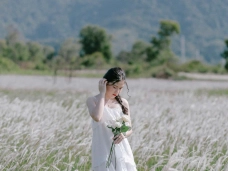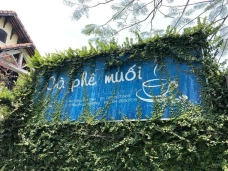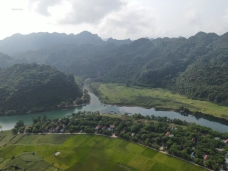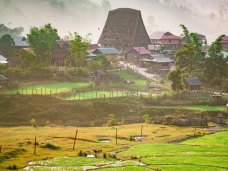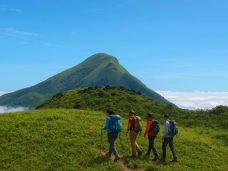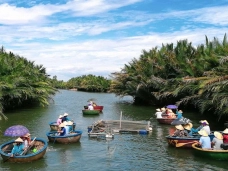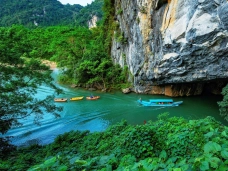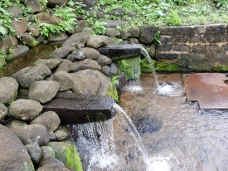Tips for Identifying Poisonous Plants When Exploring the Rainforest
15-09-2025 09:54
Main contents
- 1. Tropical Rainforest – The Hidden Danger of Toxic Plants
- 2. Identifying Toxic Plants in Tropical Rainforests
- 2.1. Han Tree (Dendrocnide spp., family Urticaceae)
- 2.2. Gelsemium (Gelsemium elegans, family Loganiaceae)
- 2.3. Strychnine Tree (Strychnos nux-vomica, family Loganiaceae)
- 2.4. Lacquer Tree (Toxicodendron succedaneum, family Anacardiaceae)
- 2.5. Hong Trau Vine (Capparis versicolor Griff., family Capparaceae)
- 2.6. Devil’s Trumpet (Datura metel L., family Solanaceae)
- 3. What to Do If You Come Into Contact with Poisonous Plants
Tropical Rainforest – The Hidden Danger of Toxic Plants
Within the tropical rainforest ecosystem, plants play a vital role not only in maintaining ecological balance but also in supporting the livelihoods of local communities. However, alongside fruit-bearing trees, valuable timber, and medicinal species, there exists a range of plants containing natural toxins that pose serious risks to human health.
These plants often develop defense mechanisms in the form of poisonous sap, stinging hairs, or toxic compounds such as alkaloids and glycosides stored in their leaves, stems, fruits, and seeds. While these traits protect them from herbivores and insects, they become potential threats to trekkers and explorers.
Field studies in regions such as Phong Nha – Ke Bang National Park, the Northwest, and Central Vietnam reveal the natural presence of dangerous species like han tree (Dendrocnide urentissima), gelsemium (lá ngón), strychnine tree (Strychnos nux-vomica), lacquer tree (Toxicodendron succedaneum), and Capparis versicolor (hồng trâu). Their external appearance can be deceptively attractive, often resembling edible plants, which makes misidentification a serious hazard.
Cases of poisoning are not rare, ranging from mild symptoms such as skin irritation, burning, or itching, to severe outcomes including respiratory failure, liver and kidney damage, or even cardiac arrest. Therefore, the ability to accurately recognize toxic plants, understand their preferred habitats, and equip oneself with basic first-aid knowledge is essential for ensuring safety in every rainforest trekking adventure.
Identifying Toxic Plants in Tropical Rainforests
Han Tree (Dendrocnide spp., family Urticaceae)
In tropical rainforests, the han tree often grows in clusters under dense forest canopies. It is a shrub or small tree reaching 1–5 meters in height, with young branches densely covered in fine needle-like hairs. Its leaves are simple, alternate, large, and broadly heart-shaped or ovate with evenly serrated margins. The underside of the leaf is lined with stinging hairs containing toxins; even a light touch can cause intense burning, itching, and swelling.
The flowers are small, greenish-white, and grow in cymes at the leaf axils, often overlooked. Its fruits are tiny and inconspicuous. The most distinctive feature for identification is the large serrated leaves covered with fine hairs that can be seen with the naked eye.
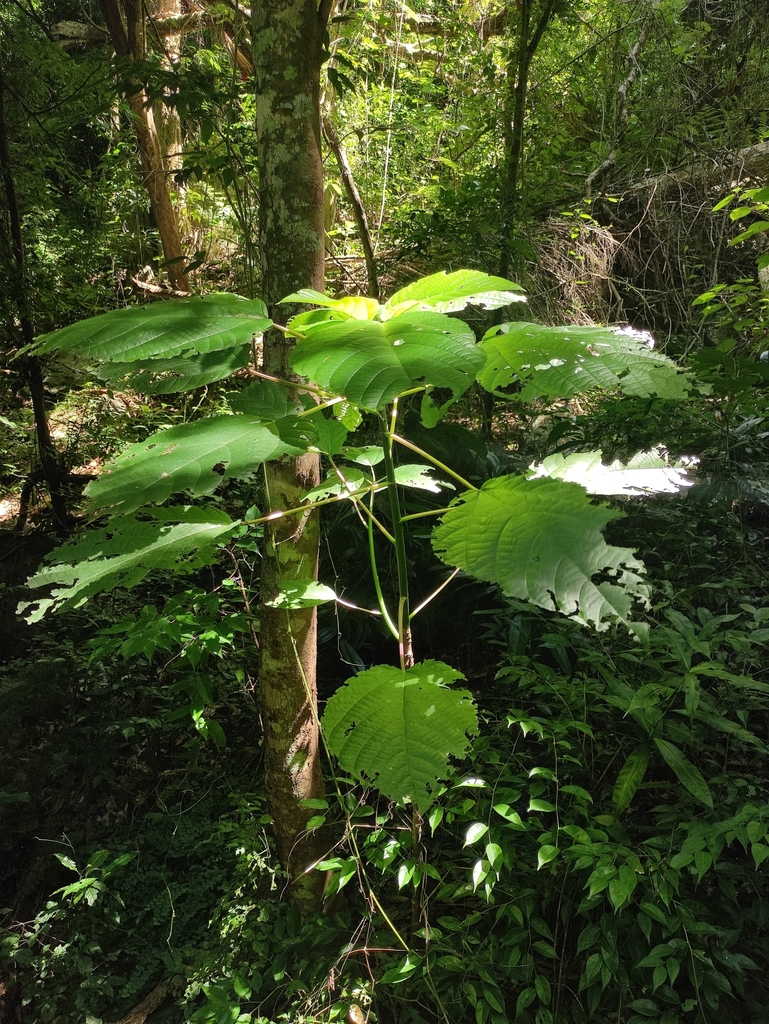 The Stinging Han Tree
The Stinging Han Tree
Gelsemium (Gelsemium elegans, family Loganiaceae)
This highly toxic climbing plant is commonly found twining around shrubs along mountain trails in northern Vietnam. Its stems are soft but become woody as they mature, often wrapping around nearby trees for support. The leaves grow in opposite pairs, are lanceolate in shape with pointed tips, and have glossy green upper surfaces with a prominent central vein.
During the flowering season, the plant is easily recognized by its bright yellow, tubular flowers that cluster at the ends of branches. The fruit is a slender capsule containing numerous flat seeds. Every part of the plant is poisonous, especially the leaves and roots. For trekkers, the most reliable identification features are its opposite, shiny leaves and the striking golden-yellow blossoms.
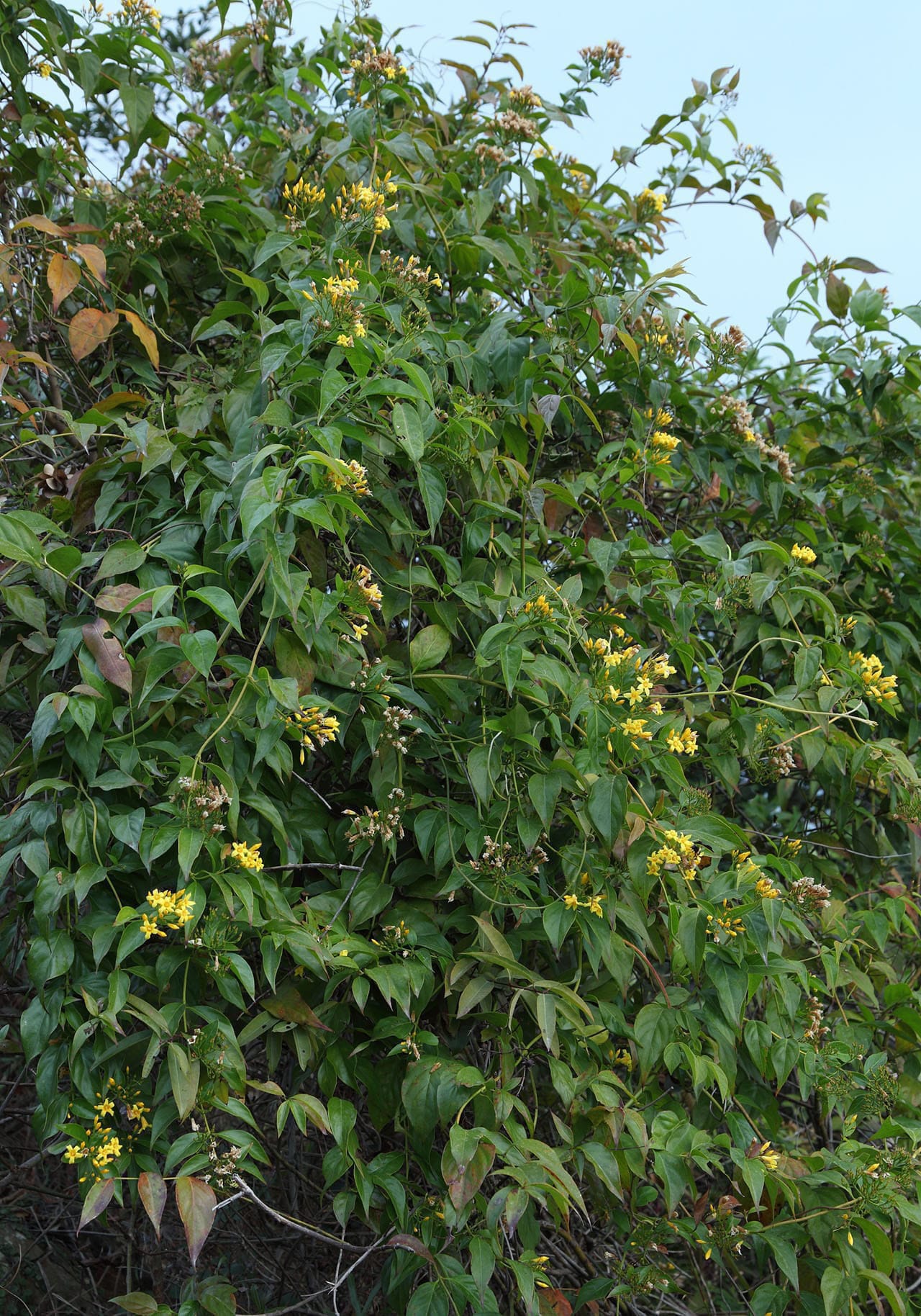 Poison Vine (Gelsemium elegans)
Poison Vine (Gelsemium elegans)
Strychnine Tree (Strychnos nux-vomica, family Loganiaceae)
This species is often found in secondary forests of midland areas, particularly along red-soil hillsides. It is a small deciduous tree, typically reaching 10–15 meters in height, with grayish bark. The leaves grow in opposite pairs, broadly ovate to nearly circular, and are most recognizable by their distinctive venation—rays spreading outward from the petiole like a fan.
Its flowers are small, greenish-white, and borne in clusters at the leaf axils. The fruit is a round berry that ripens to a striking orange-yellow color, making it quite eye-catching. Inside, the fruit contains hard, flattened, grayish-brown seeds—the most poisonous part of the plant—rich in the alkaloid strychnine.
For trekkers, the key identification features are the opposite roundish leaves with radiating veins and the bright orange-yellow spherical fruits. ⚠️ Never pick or taste the seeds—they are extremely toxic.
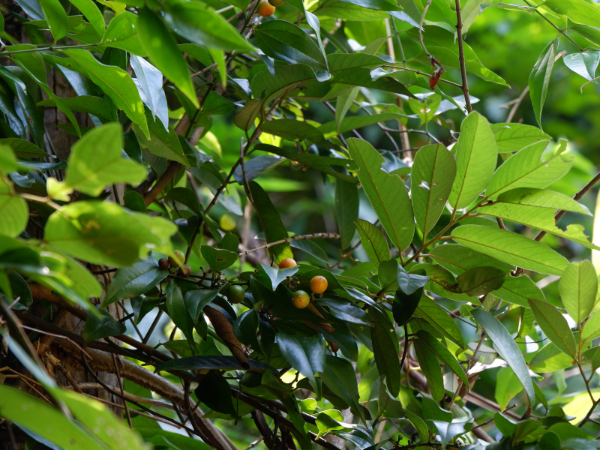 Strychnine Tree (Strychnos nux-vomica)
Strychnine Tree (Strychnos nux-vomica)
Lacquer Tree (Toxicodendron succedaneum, family Anacardiaceae)
The lacquer tree is a medium-sized deciduous tree that can reach 15–20 meters in height. It is commonly found on midland hills with well-drained, dry soils. Its leaves are pinnate and alternate, composed of multiple ovate to narrowly oblong leaflets with entire margins and a glossy green surface.
When the branches or leaves are broken, they exude a milky white sap—the main cause of severe skin irritation, rashes, and blistering upon contact. The flowers are small, yellowish-green, and borne in clusters. The fruit is a small, spherical drupe that ripens to a yellow-brown color.
For trekkers, the key warning sign is any tree with compound leaves and milky sap, as it poses a high risk of allergic reactions and contact dermatitis.
 Cây Sơn (Vietnamese Lacquer Tree)
Cây Sơn (Vietnamese Lacquer Tree)
Hong Trau Vine (Capparis versicolor Griff., family Capparaceae)
The Hong Trau vine is a wild climbing plant commonly found in secondary forests of rocky mountains. In local communities, it is also known by various names such as Rom, Me Ga, Khua Mat, Moc Qua (Thai Nguyen), Chi pan sloa (Cao Bang), or even green thorn vine in certain regions.
Its stems are pale green, armed with numerous sharp thorns that aid in climbing and protection. The leaves are quite large, about 11–12 cm long—roughly the width of two adult fingers—dark green, leathery, glossy, and hairless. The fruit is round, about the size of a chicken egg, with a smooth outer skin. When young, the fruit is pale green and firm; upon ripening, it turns purple, becomes softer, and appears attractive. Inside, the pulp is whitish, soft, and juicy, containing 4–12 flattened, purple seeds about the size of corn kernels.
This species is scattered across limestone secondary forests, shrublands, and forest edges, typically at elevations between 100–1000 meters. It has been recorded in provinces such as Lao Cai, Ha Giang, Tuyen Quang, Vinh Phuc, Nghe An, and Khanh Hoa.
⚠️ Importantly, the seeds contain a high concentration of alkaloids such as Stachydrine, Cadabicine, Capparispine, and Capparisine, which are strongly toxic. These compounds directly affect cardiac muscle cells and can cause acute pulmonary edema if the seeds—or large quantities of ripe fruits—are consumed.
Although visually appealing, Hong Trau is a dangerous plant that trekkers should strictly avoid during rainforest exploration.
 Hong Trau Vine (Vietnamese Wild Capparis)
Hong Trau Vine (Vietnamese Wild Capparis)
Devil’s Trumpet (Datura metel L., family Solanaceae)
The Devil’s Trumpet is a highly poisonous herbaceous plant commonly found in Vietnam, often growing along roadsides, vacant lots, and around village gardens. It ranges from half a meter to over two meters tall, with green or purplish hollow stems that emit a strong odor. The leaves are alternate, broad, ovate, dark green with prominent veins, and release a pungent smell when crushed.
The most recognizable feature is its large, solitary flowers that emerge from the leaf axils. These trumpet-shaped blossoms are long and flaring at the mouth, usually white or purple with white edges, and they release a faint fragrance in the late afternoon and evening. The fruit is a spherical capsule with a thick, spiny outer shell. When mature, it splits into four segments, revealing numerous small, kidney-shaped, pale brown seeds inside.
All parts of the plant are toxic, especially the seeds and leaves, which contain powerful alkaloids such as atropine, scopolamine, and hyoscyamine. These compounds can cause dry mouth, rapid heartbeat, neurological disturbances, delirium, and even death at high doses. Although small, carefully measured amounts were once used in traditional medicine for pain relief and sedation, Datura is classified today as a highly dangerous plant.
For trekkers and travelers, the key warning signs are a tall herbaceous plant with large dark green leaves, funnel-shaped white or purple flowers, and round spiny fruits. ⚠️ Never taste or touch any part of this plant—it is extremely toxic.
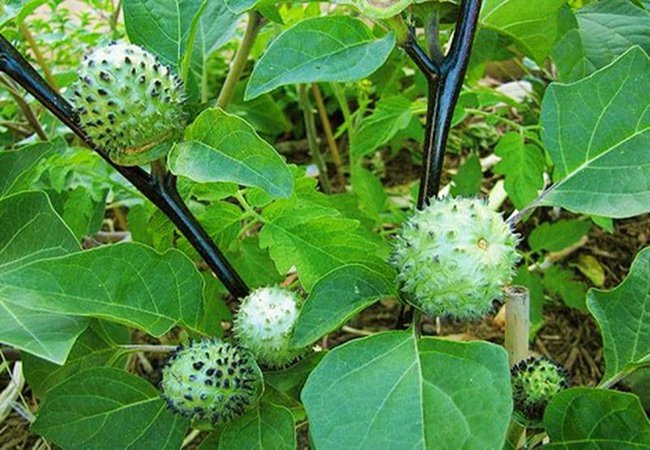 Poisonous Datura (Datura metel)
Poisonous Datura (Datura metel)
What to Do If You Come Into Contact with Poisonous Plants
If you accidentally touch or ingest a toxic plant, the most important thing is to stay calm and take immediate action:
-
For plants that cause itching or burning on the skin: Avoid rubbing. Use adhesive tape to remove fine hairs, then wash thoroughly with soap and clean water.
-
For plant sap on the skin: First wipe off the sap with a dry cloth, then wash with water.
-
If fruits or leaves are accidentally ingested: Induce vomiting (if the person is still conscious), take activated charcoal if available, and seek medical help immediately.
-
Always remember: Never taste or experiment with unfamiliar fruits or leaves in the forest.
Don’t Forget When Exploring the Forest
When stepping into the forest, the excitement of nature can easily make us forget hidden dangers. As a field observer, I’ve realized that a scientific and mindful attitude determines the safety of any journey. Don’t let the tempting colors of ripe Capparis fruits or the dazzling blooms of Gelsemium deceive your curiosity.
Train yourself to observe plant morphology: are the leaves opposite or alternate? Is the blade hairy or smooth? Does the fruit hold many seeds or just one? Does it grow in shady, humid undergrowth or on bright hillside edges? Such details can help you distinguish edible plants from poisonous ones with scientific precision.
If accidental contact occurs, act quickly: wash the area thoroughly, avoid rubbing, and seek medical care if unusual symptoms appear. For trekkers, one golden rule applies: observe with your eyes, never taste, never pluck unfamiliar leaves or fruits.
Forest experiences should be about immersing with awareness—a balance where you marvel at the grandeur of nature while ensuring safety for yourself and your companions. With the right knowledge and identification skills, every journey becomes not only an adventure but also a living scientific exploration.
Comments
Comments (Total 1)
Benjamin Netanyahu
15-09-2025
Related Articles
13-12-2025
Giải mã tên gọi Phong Nha – Kẻ Bàng
26-11-2025
Khe Sanh – A Journey into Memory
05-11-2025
8 Unmissable Instagram Spots in Da Lat
28-10-2025














